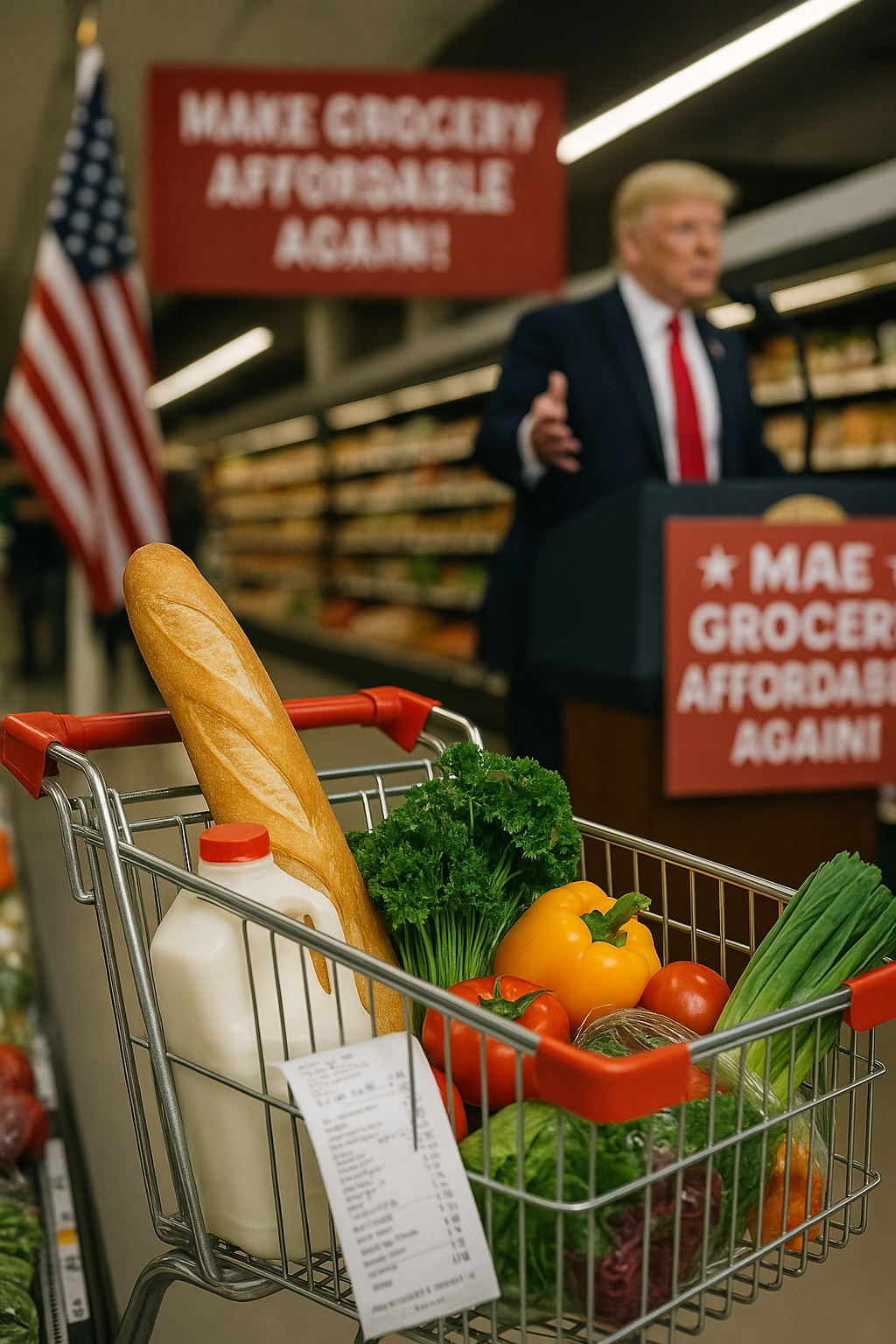Will Grocery Prices Really Fall? What to Know About Trump’s Plan
Understanding the risks and realities behind Trump's grocery price promises.

Inflation has made a trip to the grocery store feel like a financial gut punch.
Families across America are paying 20–30% more for everyday essentials compared to just a few years ago.
Thanks for reading! Subscribe for free to receive new posts and support my work.
Former President Donald Trump recently suggested a plan to bring food prices down if reelected — hinting at government pressure and price caps to curb the rising costs.
But will it work?
Here’s what experts are saying — and what smart consumers should know.
1. What Exactly Is the Plan?
So far, Trump's statements have focused broadly on:
- Using federal pressure to push grocery prices lower
- Potentially capping prices on key food items
However, detailed policies or legislation haven’t been announced yet.
The idea sounds simple — but lowering prices isn’t something a government can command easily without side effects.
2. Why Grocery Prices Are Still High
Experts point to several reasons food prices remain stubbornly high:
- Supply chain disruptions: The COVID-19 pandemic exposed major weaknesses in food production, transport, and distribution networks.
- Labor shortages: Fewer workers in farming, food manufacturing, and transportation drive up costs.
- Energy prices: Rising fuel and shipping costs directly affect the price of food.
- Global trade issues: Weather events, trade wars, and geopolitical tensions have disrupted agricultural markets worldwide.
In short:
It’s not just “greedy companies.” The entire system is more expensive right now — from the farm to your fridge.
3. Can Government Price Caps Really Work?
Economic history gives a clear answer:
Price caps often backfire.
- In the 1970s, government-imposed price controls led to widespread shortages — with store shelves emptying fast.
- Artificially capping prices doesn’t fix supply problems; it can make them worse.
- Producers may cut supply if they can’t profit, leading to even fewer goods available.
Some experts argue short-term price relief could happen if major grocers cooperate voluntarily — but long-term price fixing rarely ends well.
As Mark Hamrick, senior economic analyst at Bankrate, notes:
"There’s no easy fix. These problems are deeply embedded across supply chains, labor markets, and international economics."
4. What Smart Consumers Should Focus On Instead
Regardless of politics, your financial strategy should not depend on campaign promises.
Here’s what smart money thinkers should do:
Plan for continued volatility: Food prices may go down slightly — or they may stay elevated longer.
Become a smarter shopper:
Use warehouse clubs like Costco and Sam’s Club for bulk savings.
Meal plan carefully to reduce food waste.
Watch flyers and apps for real discounts (not fake promotions).
Keep inflation-proofing your budget:
Allocate a little more to essential categories.
Cut back on unnecessary luxury spending for now.
Control what you can.
The economy may move slowly — but your choices can move fast.
🎯 Conclusion
The idea of falling grocery prices is attractive — but real-world economics are more complicated than slogans.
Whether political leaders deliver price cuts or not, your financial resilience comes from planning ahead, shopping smart, and not depending on quick fixes.
In uncertain times, those who plan and adapt come out ahead.
🔥 Quick Tip:
👉 Want a practical cheat sheet on beating inflation at the checkout line?
Subscribe to Smart Money Talk today — smarter money habits are just one click away.
Thanks for reading! Subscribe for free to receive new posts and support my work.


